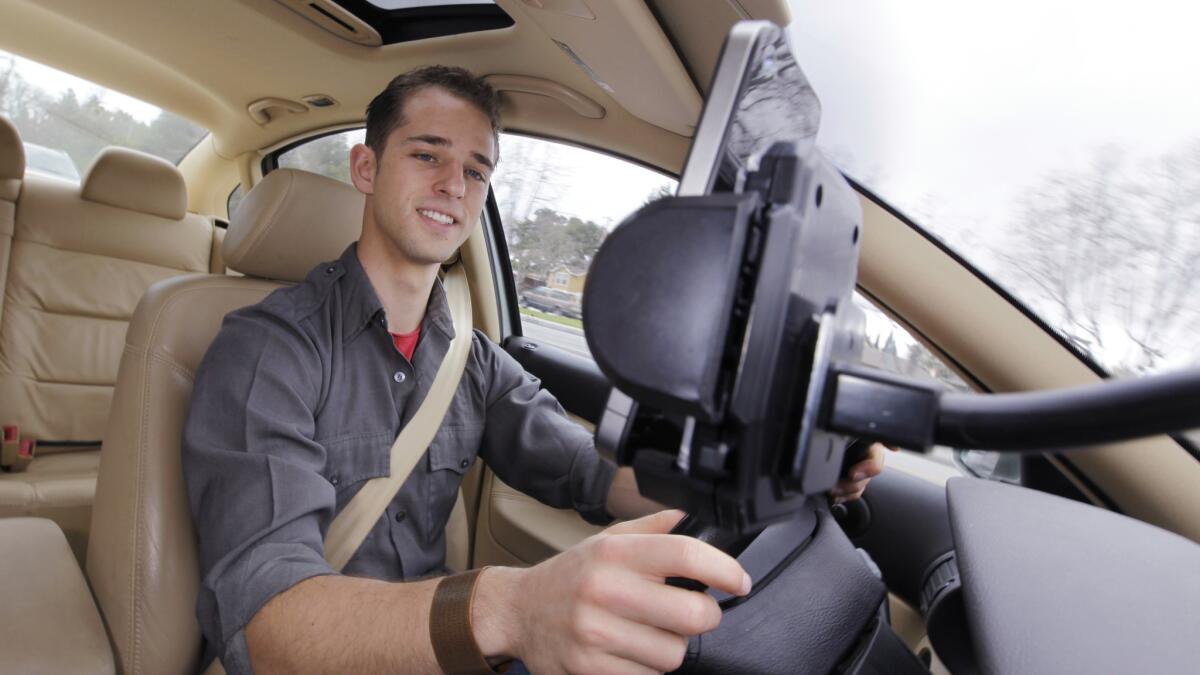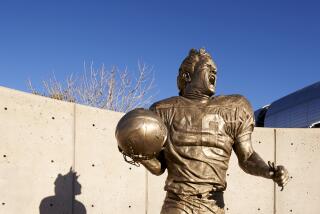Op-Ed: Why I hate Waze

On a recent evening, caught in traffic on the way to Hollywood, my wife suggested we use Waze or Google Maps -- some app or another to help us work around the crush of cars and trucks that mired the macadam like a mud flow. This is the sort of technology I should like; I will go blocks out of my way, a mile even, to avoid a static line of cars. But instead, Waze just makes me anxious, with its assumption that I can’t get around Los Angeles on my own.
Navigation, to me, is what the city is all about, and not just navigating the streets but the people. It’s one of the secret thrills of urban living, knowing how to get along, how to carve a passage amid the millions with whom we share the territory. Growing up in New York, I learned this early, and although I haven’t lived in Manhattan for many years, I still edge my way across a crowded sidewalk and board the last car of the subway so I get a seat.
In Southern California, the imperatives are different, but the challenge remains the same. I live in a city because I like the idea that, at times, getting across town becomes an act of will. Why, then, would I want to give up my engagement, my agency, to an app?
When I worked downtown, I had a range of routes according to the time of day. Never take the 10 in the afternoon, or if the freeway can’t be avoided, use the access roads. Washington Boulevard is pretty good at rush hour, but even better is Olympic to St. Andrews, then left to Ninth Street, which turns into James M. Wood.
I’m reluctant to share these directions even now; the streets are only getting more crowded and a good work-around is something to be prized. But that’s the illusion, isn’t it, that we can own a shortcut or rush-hour strategy? In order to navigate, we must be adaptable.
This is why I avoid the apps; they strip us of authority, adaptability. They replace the subtleties of memory, of hard-won knowledge, with a device whose skills are generic — even, at times, incorrect.
How often has Waze told you to turn left on a major boulevard at an intersection with no lights? Making a left turn in L.A. is “difficult stuff,” says Kevin Kline’s character to his teenage son in the film “Grand Canyon” — “one of the harder things you’ll learn in life.” The line resonates because it has a folkloric quality, one generation actively teaching the next.
Where is the resonance in typing an address on a keypad? Where is the sense of place? My wife (who, unlike me, is a Waze fan) suggests that the app creates community, with drivers warning other drivers about obstacles or speed traps in real time. She has a point, but what about all that texting from behind the wheel?
Where is the resonance in typing an address on a keypad? Where is the sense of place?
I, on the other hand, remain convinced the apps represent a case of the virtual overwhelming the actual, reducing Los Angeles to a set of unwieldy animations on a screen. Not only that, they are yet another emblem of our collective forgetting, our reliance on technology to keep track of all we once tracked for ourselves: phone numbers, addresses, shards of experience, all the outsourcing of our inner lives.
I have a friend, a longtime resident of Los Angeles, who learned the city the hard way. She would select a freeway, get off at a random exit, then find her way home through local streets. Call it urban exploration, or wayfaring; call it following your nose. In any case, it tells us something about how we interact — or once did — with the cities in which we live.
I’m not as extreme as my friend is; I like to know, generally, where I am. I visualize the map, concentrating on where I want to end up. I turn when traffic collects and drive through neighborhoods, always working my way generally north or east or south or west. It’s how I assert myself in the urban landscape, how I recognize where I am.
Take that drive to Hollywood: Despite the gridlock, we got where we were going and on time. We jumped to Sixth Street, which tends to move, even at the densest hours, then took Wilton north to catch the lights. Eventually, we found ourselves on Fountain, having dodged Joseph Le Conte Middle School.
“Take Fountain,” Bette Davis once told Johnny Carson when he asked the best way for an actress to get to Hollywood. Davis did not need Waze to understand this, and we don’t either. The joke is good because experience, not technology, tells us it is true.
David L. Ulin is a 2015 Guggenheim Fellow and the author of “Sidewalking: Coming to Terms with Los Angeles.”
Follow the Opinion section on Twitter @latimesopinion and Facebook.
ALSO
Late arrivals: Uber drivers who missed filing deadline are still bashing proposed lawsuit settlement
Uber and Lyft drivers are safer than the average American driver, according to new report
Waze tests carpooling in Bay Area
More to Read
A cure for the common opinion
Get thought-provoking perspectives with our weekly newsletter.
You may occasionally receive promotional content from the Los Angeles Times.







